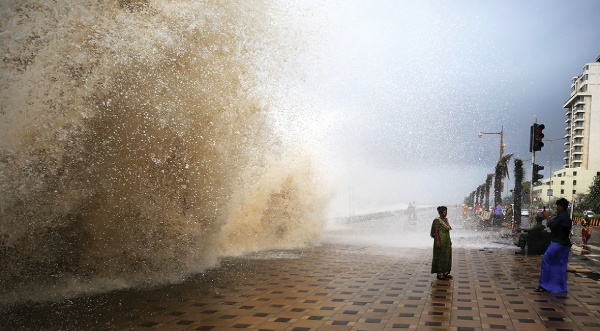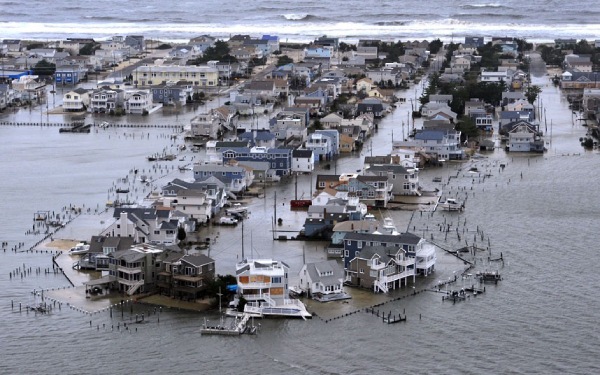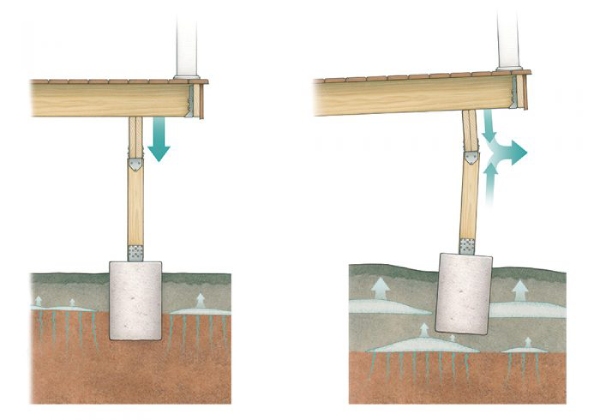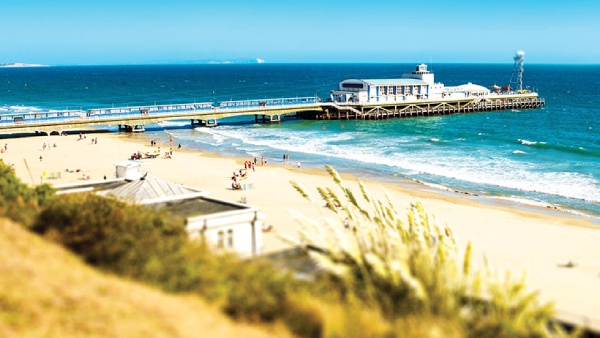Cities have been creeping to a greater extent into the ocean ever since we first started building harbours. All across the globe, cities are edging further into the sea. The romance of living by the sea and oceans is something we’ve all dreamed of at least once. The foggy mornings and enthralling storms, the sunlight glittering on the water and the sound of waves crashing, the waking up to the refreshing smell of the ocean; it all has a storybook appeal to it. Unfortunately, like most things that seem too good to be true, living by the sea isn’t always the stress-free fairy-tale we hope it would be.

Downsides of Living by The Sea
While living by the ocean can be beautiful and enjoyable, there are some things to keep in mind–especially when it comes to homeownership. Here are seven downsides of living by the sea:
01. Salt Is Hard on Houses

Anyone living near the ocean can attest to the difficulties of salt. Salt corrodes, peels and destroys almost any surface it sits on–and it sits on everything when you live near the ocean. Even on warm, sunny days, salt evaporates from the sea and comes and lays all over your house. What this means is that you will most likely have to repaint your home much more often than you would be living inland (hence the prevalence of cedar shake on oceanside houses). Salt will also make anything metal rust, including door hinges. Remember like UV radiation of the sun, salt or salty wind and degradation almost all major common materials, increasing your maintenance cost forever.
02. Salt Breaks the Building Materials

Not only does salt is hard on houses, but it does break the building materials. It has corrosive effects on concrete, which includes foundations, pilings, sidewalks, and structural walls. In addition to it, it not only eats the metal reinforcements, but it also penetrates in the concrete and breaks it down. If any structure is exposed to any saltwater flooding, it may develop severe structural problems leading to collapse.
03. Storms are more intense

Those beautiful, intense ocean storms may be something to behold, but they are far from gentle on your homes. High winds and rain and hurricanes are prevailing near the ocean, and these can wreak havoc on a home. Strong winds can only mean flying debris that can damage your siding, break your windows, or cause trees to fall on your home. Needless to say, if you buy near the ocean, you’ll become much more aware of incoming weather.
04. Flooding is a risk

Along with those big storms, comes the risk of big floods. When you buy near the ocean, flooding is a common risk. A high tide combined with a massive storm can spell disaster for homes near the water. Because of this, home insurance providers may require homeowners near the ocean to have flood insurance, which can be extremely costly. According to ‘Consumer reports’, (Published in What Flood Insurance Does and Does Not Cover), “Flooding is the most common and costly natural disaster and can happen anywhere. Just a single inch of water can cause damage up to 25,000$ to a home or apartment.” Sometimes if you live in an area that is frequently hit by floods due to storm surges, you may not even be able to get insurance.
05. Frost Heave

If you live in a northern seaside town, you will have to face the cold months of living near the water. While living near the ocean is often more temperate than living inland, the incredible temperature swings will mean that you (and your home) will have to weather the effects of frost heave. Frost heave is when saturated soil swells upwards due to a sudden drop into freezing temperatures. Needless to say, foundations, walkways, and patio stones don’t love this experience.
06. Invasive Species Ruining the Shoreline

Living near the ocean often means you will live near other waterways as well. It means that having a pond on your property or being adjacent to a lake isn’t uncommon. However, these bodies of water pose their problems. Invasive species of plants can ruin the shoreline, requiring milfoil removal for large-scale projects to save the look of your pond or lake and make it livable for the creatures in it.
07. Sandy home floors

Sand is the naturally occurring element near the seas and oceans. So, if you live beside these areas, there is a probability of getting a sandy feel beneath your feet. And this is more annoying to get rid of grains of sand to keep your home neat and tidy.
08. Salt Harms the Electrical Components of Your Home
When electrical components are exposed to salt, the metal corrodes, leading to shorts and other problems. In this case, an electronic device might just be broken, failing to turn on at all. Or, it might expose people to the risk of electrical shocks because of the corrosion.
Conclusion
In a nutshell, there are many serious downsides of living by the sea. Hence if you are thinking of buying a house near the ocean, always think twice before choosing finally, past doesn’t get carried away by the exciting thoughts of sunrise or sunset or a pleasant morning or evening walk along the coast. Remember, all days are never going to be the same.
Also Read:
A Bridge Over Water | How About A House Over Water?
Different Types of Natural Disasters
Cyclone: Do’s & Don’t for Your Home
Image Courtesy: Image 1, Image 2, Image 3, Image 4, Image 5, Image 6, Image 7, Image 8

